3D printing process | manufacturing of the future
- Details
- Hits: 9042
The additive manufacturing, also known as 3D Print, encompasses various technologies, all based on the same fundamental concept: the layer-by-layer construction of an object. These include techniques such as Stereolithography (SLA), Selective Laser Sintering (SLS), Fused Deposition Modeling (FDM), and Direct Metal Laser Sintering (DMLS), to name a few. What is behind each Process hides, find out here.
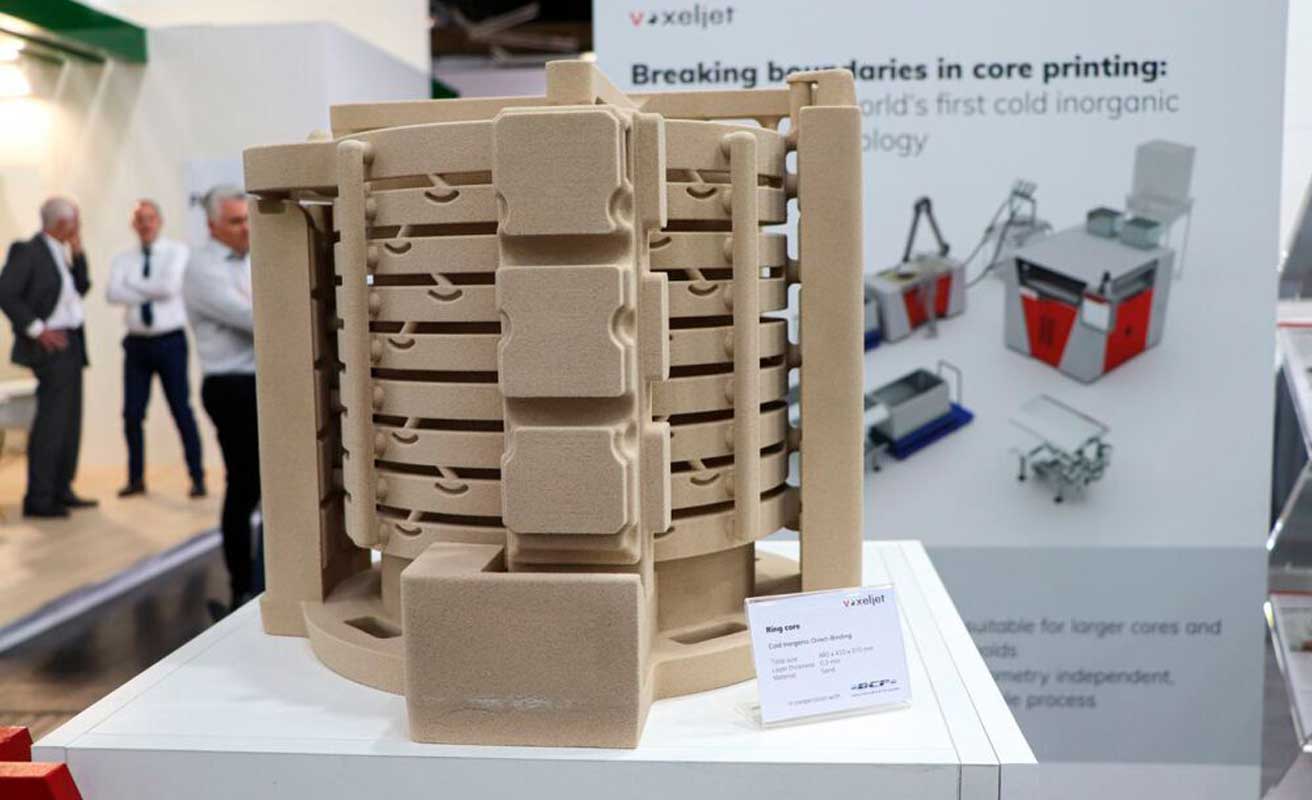
Contents
- Development status and trends in 3D printing processes
- Innovations for additive manufacturing
- World first: Pioneering cold IOB process
- 3D printing of sand molds for metal casting for e-mobility
- 3D printing processes pave the way for mass production
- Smooth and sealed surfaces for 3D printing components
- Contour-oriented cooling in mold making through additive construction
- 3D printed circuit board significantly more precise
- Aircraft doors using cast models from the 3D printer
- 3D microprinting based on two-photon polymerization
- Connected prototyping for Industry 4.0 - lecture
- Basics of additive manufacturing
Development status and trends in 3D printing processes
The current status of 3D printing processes or additive manufacturing is as impressive as it is constantly changing. 3D printing technology has the potential to replace traditional manufacturing processes in various fields, especially when individual or complex shaped parts are required. Compared to conventional manufacturing, additive manufacturing processes can shorten production times and significantly reduce costs for prototypes and small series production. In addition, the production on the 3D printer allows an unprecedented freedom of design and can reduce the use of materials.
 3D printing service – online and fast
3D printing service – online and fast
With regard to the Trends It is becoming apparent that additive manufacturing is increasingly being integrated into mass production in industry. Processes such as HP's Multi Jet Fusion (MJF) or Digital Light Processing (DLP) are gaining in importance because they promise faster production and better surface qualities.
At the same time, there is a growing focus on Metal 3D Printing and Multi-material 3D printing to observe. Additive processes like that Direct metal laser sintering (DMLS) or that electron beam melting (EBM) are being further developed to produce stronger and more complex metal parts. Research into new materials for 3D printers, from improved plastics to materials with biocompatibility, is also an important trend in the development of additive manufacturing.
Innovations for additive manufacturing
The following information presents you New developments in additive manufacturing processes.
World first: Pioneering cold IOB process
 29.06.2023 | Voxeljet presented a new 2023D printing process at GIFA 3: With the new cold IOB (inorganic binding) 3D printing technology, molds and cores for the foundry industry can be produced from sand and an inorganic binder for the first time without subsequent microwave treatment.
29.06.2023 | Voxeljet presented a new 2023D printing process at GIFA 3: With the new cold IOB (inorganic binding) 3D printing technology, molds and cores for the foundry industry can be produced from sand and an inorganic binder for the first time without subsequent microwave treatment.
The new cold IOB technology requires no microwave and thus saves investment and operating costs. For the FoundrymanIndustry has numerous advantages with this 3D printing process: When casting, only water vapor is produced instead of harmful gases. This reduces emissions and improves working conditions in foundries.
Cores and molds with inorganic binders
"The introduction of cold IOB technology is an important step towards the further spread of printed cores and molds with inorganic binders in the foundry industry," says dr Ingo Ederer, CEO at Voxeljet. "Our goal is to provide innovative solutions that not only increase efficiency, but also help promote the sustainability of metal casting."
Those manufactured with the Kalt-IOB process technology shapes and cores offer high dimensional accuracy, very good resolution and edge sharpness as well as the possibility of producing large molds and cores using the 3D printing process. In contrast to warm IOB processes, where printed cores have to be cured and dried with a microwave, with cold IOB technology the parts only have to be dried after 3D printing, which takes place outside the machine. The new 3D printing process can be used on all Voxeljet platforms.
Demand for cold IOB increases
The application of inorganic binders in the foundry industry increases especially in the automotive industry. And so the demand for inorganically bound molds and cores will continue to rise against the background of increasing environmental regulations. The cold IOB technology is particularly suitable for the construction of prototypes and medium-sized series.
3D printing of sand molds for metal casting for e-mobility
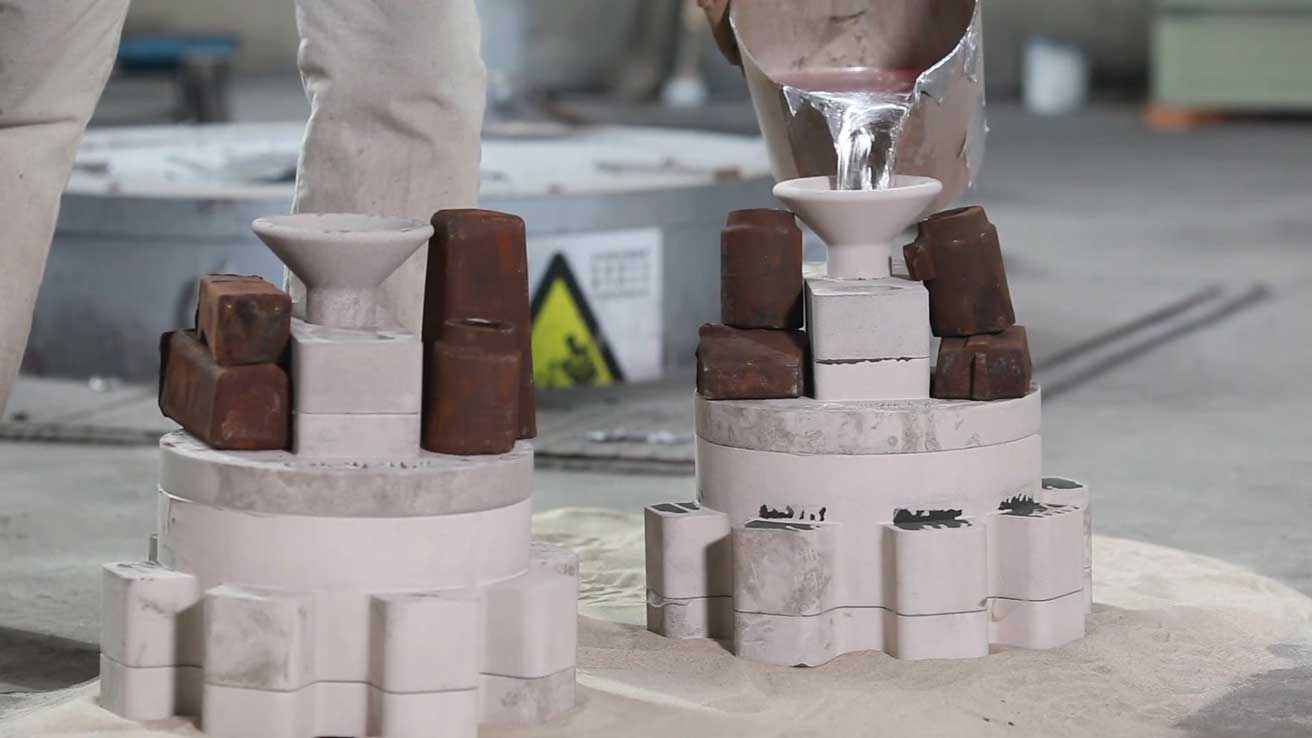
27.04.2020/3/XNUMX | The XNUMXD printing of sand molds for castings with subsequent casting is now also finding its way into the automotive industry in the production of components for the Electromobility. The research and development department of the Asia-Pacific Division of Voxeljet China, led by Tianshi Jin, Managing Director Voxeljet China, has already gained experience in the field of industrial additive manufacturing of molds with a key customer and automotive OEM.
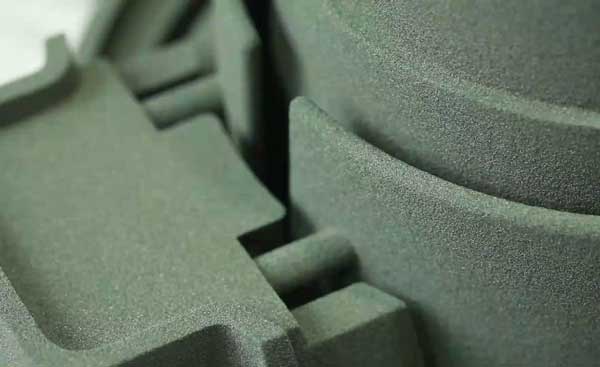 A car manufacturer and customer of the Chinese foundry approached the Chinese foundry to improve the performance of their electric motor Meimai Fastcast Suzhou Co. LTD to Voxeljet, additive manufacturing expert. The first generation of their electric motor did not meet the demands of various electric cars.
A car manufacturer and customer of the Chinese foundry approached the Chinese foundry to improve the performance of their electric motor Meimai Fastcast Suzhou Co. LTD to Voxeljet, additive manufacturing expert. The first generation of their electric motor did not meet the demands of various electric cars.
Lichi Wu Project Manager at Meimai Suzhou: “We had to get considerably better quickly and test numerous variants of the electric motor housing. The conventional production methods for casting molds are extremely time consuming. Fortunately, we came across additive manufacturing, the 3D printing process for molds from Voxeljet. "
"Flexibility and time savings were the critical factors that brought Meimai Suzhou to us," recalls Voxeljet's Tianshi. "Because the conventional production of the housing parts for the prototypes of the electric motors simply took too much time."
Meimai Suzhou was able to implement various design drafts and the downstream changes to the components with the 3D printer extremely fast carry out. The project was even completed before the set date - including complete data creation of the various components.
3D printing reduces waste in the automotive industry
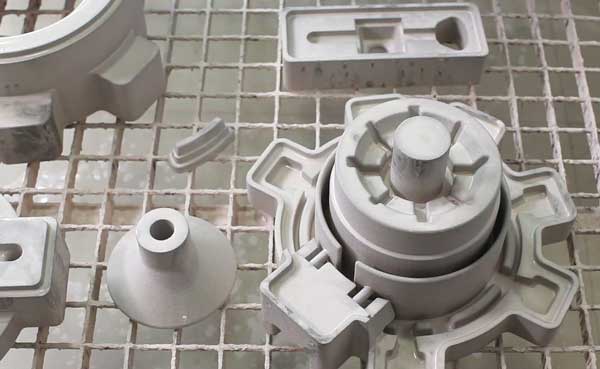 Meimai Suzhou was able to observe other advantages with the 3D printer manufacturing process: In addition to the rapid additive manufacturing of the molds, there were also small lot sizes to manufacture more cost-effectively. 3D-printed sand molds are tool-free in small quantities and therefore cheaper to manufacture.
Meimai Suzhou was able to observe other advantages with the 3D printer manufacturing process: In addition to the rapid additive manufacturing of the molds, there were also small lot sizes to manufacture more cost-effectively. 3D-printed sand molds are tool-free in small quantities and therefore cheaper to manufacture.
The Reject rate is also low because 3D printing is highly precise and reliable. In this way, foundries and mold makers can reduce the risk of mold revisions. A faulty sand mold has to be reworked by hand up to the production of a new tool. There is no such risk with Voxeljet's 3D printing process, because the molds are produced without tools.
"Manufacturing different types of engines is significantly faster thanks to industrial 3D printing," says Wu. “Thanks to the fast and tool-free mold making, for example Rapid Prototyping of motor types A and B can be manufactured and tested simultaneously. Then the more powerful or more efficient prototype is selected for mass production. "
Future potential for 3D printing in mold making
 But industrial additive manufacturing still has more potential, which goes beyond the manufacture of electric motor housings. The Chinese foundry is already experimenting with sand molds from the 3D printer for controller housings, retarder housings, subframes, various brackets and many other components that play a fundamental role in electromobility. "The process dramatically simplifies the construction of prototypes and the further development of future mobility," says Lichi Wu, looking forward to the future.
But industrial additive manufacturing still has more potential, which goes beyond the manufacture of electric motor housings. The Chinese foundry is already experimenting with sand molds from the 3D printer for controller housings, retarder housings, subframes, various brackets and many other components that play a fundamental role in electromobility. "The process dramatically simplifies the construction of prototypes and the further development of future mobility," says Lichi Wu, looking forward to the future.
In addition to the rapid implementation of the EnginesMeimai Suzhou also has the components through a clever optimization of the designs Engine performance increased. “The durability of the components can also be influenced. As the next step in the development of the housing, we will tackle the weight savings through topology adjustments such as the position and height of the outer reinforcing ribs, ”says Tianshi.
3D printing in the application for steel foundries
The Steel foundry Wolfensberger is increasingly relying on sand molds and sand cores supplied by Voxeljet for the production of complex rapid prototyping castings. These are produced using the attached 3D data. Such efficient additive 3D printing technologies make it possible to deliver cast components for test purposes to the end user in a short time without first having to produce complex and expensive model equipment.
Because there is no need to build models, 3D printing technologies like this shorten the throughput time for prototyping by weeks. Modifications to the originally developed constructions increase the efficiency here and the actual 3D model production for the Serial Production can be started quickly.
3D printing processes pave the way for mass production
 01.08.2019 | The Silicon Valley based company Carbon developed the Digital Light Synthesis (DLS) technology for 3D printing, with which the production of parts can be accelerated by up to a hundred times compared to previous processes. After years of research, Carbon has also developed a novel liquid polyurethane resin suitable for the manufacture of parts.
01.08.2019 | The Silicon Valley based company Carbon developed the Digital Light Synthesis (DLS) technology for 3D printing, with which the production of parts can be accelerated by up to a hundred times compared to previous processes. After years of research, Carbon has also developed a novel liquid polyurethane resin suitable for the manufacture of parts.
Covestro is a key partner in the scale-up and large-scale production of this material. The company invested a significant amount to be able to produce the resin in commercial quantities. The result of the collaboration demonstrates the suitability of the process and material for series production and is a recent success of the partnership.
The DLS technology is now being used on a large scale for the first time. Similar to stereolithography, the workpiece is created in a tub with liquid plastic resin, which is hardened using UV radiation.
Oxygen is supplied from below, which counteracts the hardening and liquid dead zone generated. For this purpose, the bottom of the vessel consists of a light- and air-permeable membrane, which is constructed in a similar way to a contact lens. The printed 3D object is continuously pulled out of this zone without individual layers forming.
Manufacturing using DLS technology is up to 100 times faster than stereolithography. A protected process is combined with the associated hardware and software and with a special material. It gives the finished parts the desired technical and mechanical properties.
Smooth and sealed surfaces for 3D printing components
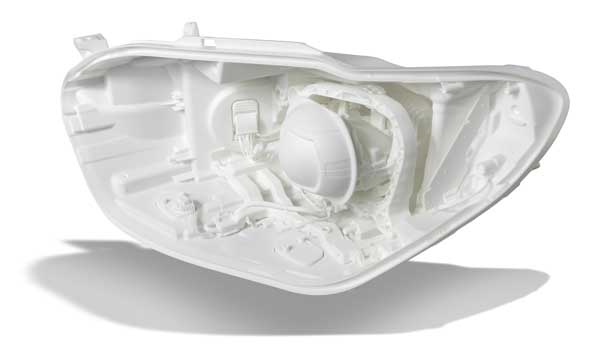 04.07.2019 | Thanks to the development of a new finishing technology FKM sintering technology now refine the surfaces of plastic molded parts from 3D printing in many ways. The fully automated surface technology process is called "FKM smooth" and is primarily aimed at homogeneous smoothing and sealing.
04.07.2019 | Thanks to the development of a new finishing technology FKM sintering technology now refine the surfaces of plastic molded parts from 3D printing in many ways. The fully automated surface technology process is called "FKM smooth" and is primarily aimed at homogeneous smoothing and sealing.
Since it can be controlled very precisely, it can also be used to create many other surface qualities. In principle, the method is suitable for all common ones Laser Sintered Polymer-Materials, small and large components as well as external and internal surfaces.
Bring to high gloss with FKM smooth
The surfaces of the components can be brought to a high gloss, smoothed, leveled, matted, sealed and protected with FKM smooth and optimized in terms of their hygiene, permeability, food conformity and mechanical strength. The properties generated with the process cover the surface completely evenly and completely.
This even applies to all internal structures as well as areas that are never accessible for conventional processing techniques (grinding, tumbling, etc.). The new process from FKM is therefore also suitable for particularly demanding functional components with very complex and filigree geometries.
3D printed circuit board significantly more precise
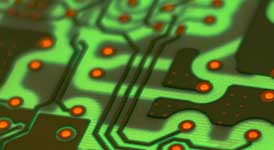 13.12.2017 | The one pushed by Würth Electronic and Fela S.mask technology follows an approach to applying a defined, functional surface via 3D printing that is independent of paint and machinery. From the point of view of the two companies, this is the best starting point for gradually digitizing printed circuit board production and its processes.
13.12.2017 | The one pushed by Würth Electronic and Fela S.mask technology follows an approach to applying a defined, functional surface via 3D printing that is independent of paint and machinery. From the point of view of the two companies, this is the best starting point for gradually digitizing printed circuit board production and its processes.
Contour-oriented cooling in mold making through additive construction
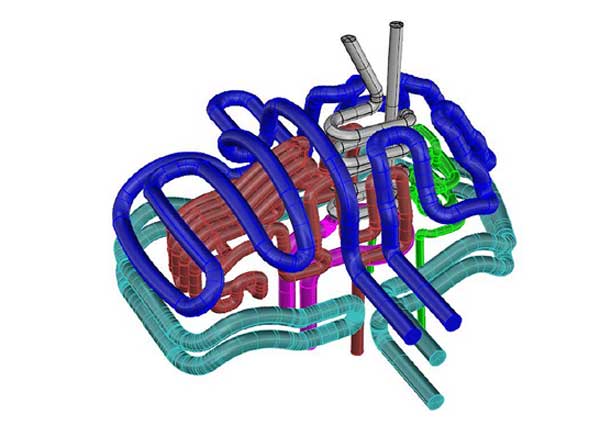 16.10.2017 | BKL laser technology uses new possibilities in additive manufacturing to equip tools with additional functionalities. Due to the layered structure of the workpiece, complex geometries can be realized, which, thanks to high-precision temperature control close to the contour using the finest channels and insulating honeycomb structures, make it possible to optimally preheat or cool molds.
16.10.2017 | BKL laser technology uses new possibilities in additive manufacturing to equip tools with additional functionalities. Due to the layered structure of the workpiece, complex geometries can be realized, which, thanks to high-precision temperature control close to the contour using the finest channels and insulating honeycomb structures, make it possible to optimally preheat or cool molds.
Areas of the tool that normally remain solid after machining can show through thanks to 3D printing lattice structures be replaced, which do not differ in strength from solid components. Using such a grid structure, the thermal conductivity of individual areas of the tool can be designed as desired. The resulting cavity (air space) also functions as insulation.
The graphic shows how close the channels for preheating and cooling can be to the contour of the workpiece. This is only possible through the additive structure of the mold insert.
The lattice structure also reduces the energy required for heating and cooling, as there is less mass to be heated. The wear and tear on the injection molding machines is also reduced, since only an injection pressure of 200 bar is worked (Mucell spraying technology) and the machines have to apply significantly lower holding forces thanks to the lightweight construction of the moulds.
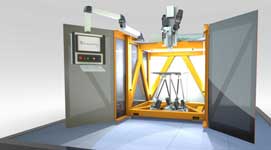 3D printer for additive manufacturing of plastic parts
3D printer for additive manufacturing of plastic parts
Due to the improved tempering of the molds, the production cycles can be significantly shortened. This allows the expansion of the production capacity of an existing machine park by up to 30% without additional investment. The geometries that can be realized today through additive manufacturing open up completely new possibilities in the design of tools and are far from being exhausted.
Aircraft doors using cast models from the 3D printer
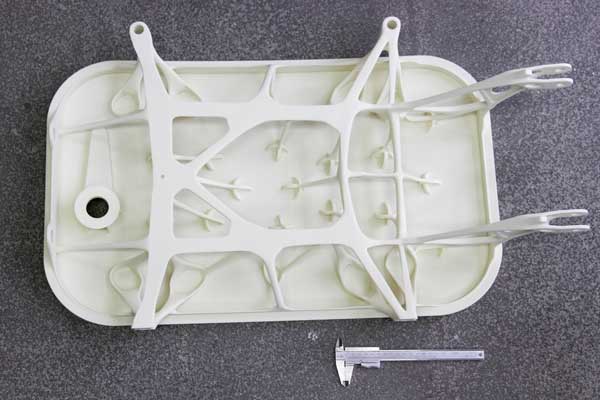 12.09.2017 | sogeclair has found a way to save 30% weight when constructing aircraft doors: The French aviation supplier relies on 3D-printed PMMA models from Voxeljet for tried-and-tested investment casting. They allow new freedoms in lightweight design and can be produced quickly and inexpensively.
12.09.2017 | sogeclair has found a way to save 30% weight when constructing aircraft doors: The French aviation supplier relies on 3D-printed PMMA models from Voxeljet for tried-and-tested investment casting. They allow new freedoms in lightweight design and can be produced quickly and inexpensively.
In order to make aircraft more fuel-efficient, aluminum and titanium laser sinterede components with new, material-saving geometries can be realized from the 3D printer. The shortcoming: The manufactured components are comparatively expensive and have so far only been suitable for the production of small components. But what about larger components such as aircraft doors?
"This offers the possibility of combining 3D printing with tried and tested investment casting," says Thierry Herrero, Director Sales West Europe at Voxeljet. With the help of the 3D printer, which additively prints investment casting models for previously unmanufacturable geometries with plastic (PMMA) - without any expensive special tools. "This combines the geometric freedom of 3D printing and the stability of tried and tested investment casting."
Research project of Sogeclair
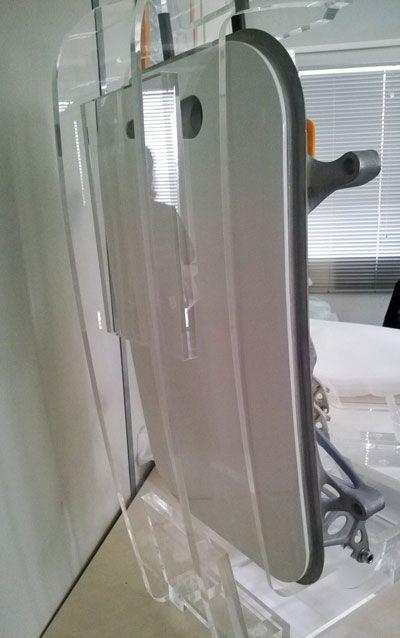 A research project of the French aerospace supplier deals with futuristic aircraft doors that, thanks to a sophisticated, bionic mesh made of aluminum struts, require significantly less material while being just as robust. Designing such a mesh with CAD is no problem for the aerospace experts.
A research project of the French aerospace supplier deals with futuristic aircraft doors that, thanks to a sophisticated, bionic mesh made of aluminum struts, require significantly less material while being just as robust. Designing such a mesh with CAD is no problem for the aerospace experts.
On the other hand, it becomes difficult when it comes to production using the investment casting process. "Especially when developing prototypes, companies have to keep changing the subtleties," explains Herrero. "However, it is time-consuming and expensive to use special tools to produce a new mold for investment casting for each change." The 3D printing system VX1000 is one of the largest industrial 1000D printing systems for investment casting models with a construction space of 600 x 500 x 3 mm. Design changes can be implemented directly on the screen.
Manufacture of the aircraft door
The 3D printing specialist uses the CAD file of the aircraft door as input for the 3D printing system. This applies an acrylic plastic called polymethyl methacrylate (PMMA) in powder form to the construction area – in 150 µm thin layers. The print head then moves over the construction area and glues the digital construction plan at certain points PMMA. This is followed by a fresh layer of powder. Layer by layer, the investment casting model is created, which performs better in terms of quality than test prints from the competition.
“Compared to other additively processable materials, such as Liquid resins in the Stereolithography the PMMA can be burned out excellently. The main reason for this is the negative expansion coefficient of our powder material, which did not result in any shell fractures when the thin-walled model was burned out,” says Herrero.
When the PMMA model is finished, it is infiltrated with a hot wax to seal the surfaces. The next step will be in the foundry. Employees provide the printed model with ceramic layers and melt the model in a furnace. The remainder is a ceramic mold, which is then filled with liquid aluminum. When the metal has hardened, employees cut the ceramic layer and release the finished aircraft door.
3D microprinting based on two-photon polymerization
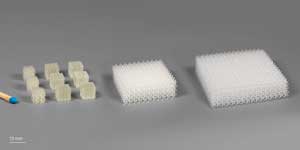 15.02.2017 | Nanoscribe develops and sells 3D printers and greyscale lithography systems for microfabrication, including the Quantum X shape. The laser lithography system is based on two-photon polymerisation and combines proprietary printing technologies. Below you will find information about new developments and applications of the micro 3D printer.
15.02.2017 | Nanoscribe develops and sells 3D printers and greyscale lithography systems for microfabrication, including the Quantum X shape. The laser lithography system is based on two-photon polymerisation and combines proprietary printing technologies. Below you will find information about new developments and applications of the micro 3D printer.
Connected prototyping for Industry 4.0 - lecture
01.02.2017 | Johanna Krimm, Marketing + Sales, Kegelmann technique GmbH, Rodgau-Jügesheim, will show at the RBS Stutensee trade press days how the company, with the philosophy of connected prototyping, is expanding previous limits on the way to Industry 4.0 by combining conventional and additive technologies under one roof
Basics of additive manufacturing
What 3D printing processes are there?
There are a number of 3D printing processes or additive manufacturing techniques. The following 3D printing process overview shows some of the most well-known:
- Fused Deposition Modeling (FDM): In the most well-known process, a thermoplastic is extruded through a heated nozzle, which deposits the material in a certain layer thickness on a platform. The material cools and solidifies, building the model layer by layer. The cost-effective method has limitations in terms of detail due to the relatively low resolution and visible layers.
- Stereolithography (SLA): SLA uses a UV laser to solidify a liquid resin in a container layer by layer. This process produces models with high levels of detail and surface finish, but is typically more expensive and slower than FDM.
- Digital Light Processing (DLP): DLP is similar to SLA in that it is also a light-cured process, however it uses a digital light source to project the entire layered image onto the resin. This will cure each layer in one pass.
- Selective laser sintering (SLS): SLS uses a laser to sinter or melt a powdered material (usually nylon or polyamide) layer by layer. The process produces robust models and, unlike FDM and SLA, does not require any support structures. It offers high structural strength and design flexibility, but the end products can have a rough surface finish.
- Selective laser melting (SLM) and Direct Metal Laser Sintering (DMLS): Both processes use a laser to melt and sinter metal powder, creating a solid metal part. SLM and DMLS are often used in aerospace and medical technology.
- poly jet or Multijet Modeling (MJM): In this process, small drops of a photopolymer resin are sprayed onto the construction platform and immediately cured with UV light.
- Electron Beam Melting (EBM): EBM is similar to SLM and DMLS, but uses an electron beam instead of a laser to melt and sinter metal powder.
- Laminated Object Manufacturing (LOM): In LOM, layers of paper or plastic are stacked and glued together, and then the model is cut out of those layers.
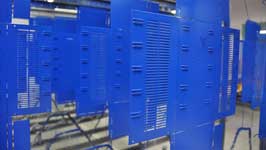 Antibacterial even without disinfection with a special coating
Antibacterial even without disinfection with a special coating
There are many other processes that use more specific applications or materials, but these are some of the most commonly used techniques in 3D printing. A number of processes have established themselves as industry leaders, including Stereolithography (SLA), Fused Deposition Modeling (FDM) and Selective Laser Sintering (SLS).
Are there other additive processes that are not 3D printing?
Additive manufacturing encompasses different technologies, all based on the same fundamental concept: building an object layer by layer. However, there are other additive processes that don't necessarily qualify as "3D printing". An example of this is electron beam melting (EBM).
Although still an additive process, it differs from traditional 3D printing in that it uses electron beams instead of light (as in SLA) or a laser (as in SLS) to melt and build up the material. In Laminated Object Manufacturing (LOM), thin layers of material (such as paper or plastic) are stacked and glued together, and then cut into the desired shape with a laser or knife.
The limits of what can be considered "3D printing". depending on the context and purpose vary. Some people use the term "3D printing" as a generic term for all additive manufacturing technologies, while others only use it for specific processes.
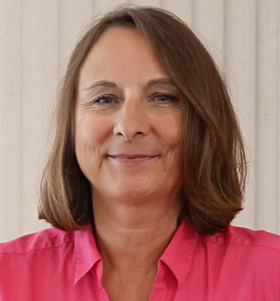
Angela Struck is editor-in-chief of the development scout and freelance journalist as well as managing director of Presse Service Büro GbR in Ried.
